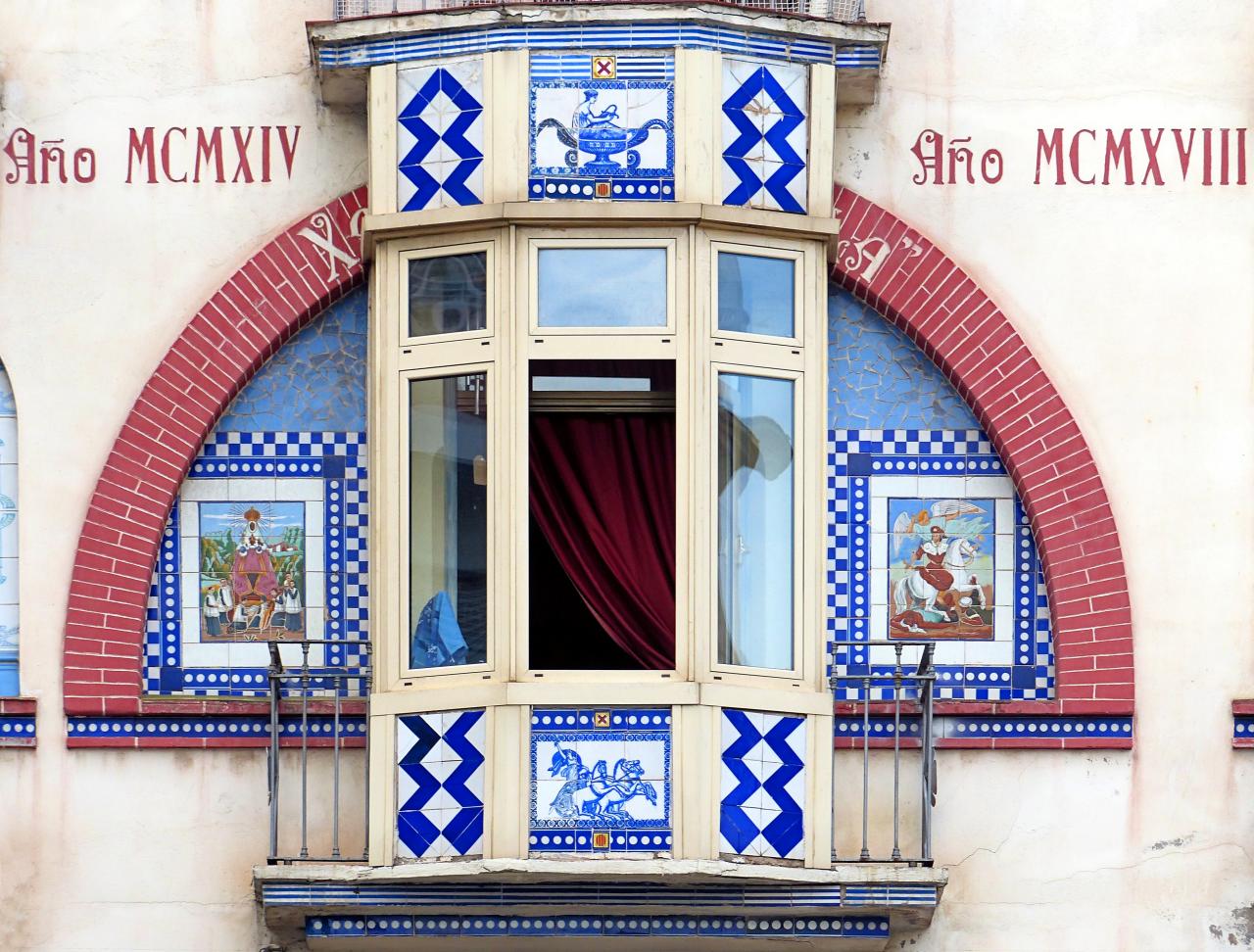#2175. Art Nouveau Façade with Azulejo: Iberian Bay Window 1914-1918

Before us stands a striking example of a decorative Art Nouveau façade from the early 20th century, as evidenced by the Roman numerals "Año MCMXIV" (1914) and "Año MCMXVIII" (1918) framing the arched composition. The central element of the façade features a bay window with a balcony, elegantly decorated with blue and white ceramic tiles in the Portuguese azulejo style.
The architectural solution exhibits the characteristic asymmetry of Art Nouveau and an organic combination of functional and decorative elements. The central part of the bay window is designed with a triple window featuring cream-colored wooden frames that contrast with the rich red brick of the arched framing. Special expressiveness is given to the façade by narrative ceramic panels depicting images typical of the Iberian tradition – a horseman, figures in national costumes, and a decorative vase in the upper central part of the composition.
Geometric motifs in the form of blue diamonds and checkered patterns create a rhythmic structure, emphasizing the vertical articulation of the bay window. The lower balcony with metal railings complements the composition, while the burgundy drapery visible behind the central window adds theatricality and intimacy characteristic of residential Art Nouveau architecture from the beginning of the last century.